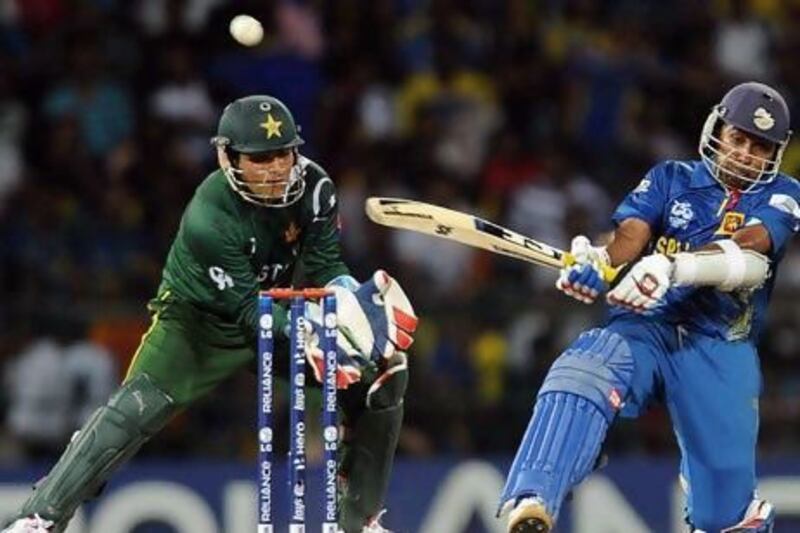One of the redeeming features of Twenty20 is that it is just as accommodating as the game itself.
When the first World Twenty20 was held in 2007, two of the highest-profile non-selections were South Africa's Jacques Kallis and Pakistan's Mohammad Yousuf (Sachin Tendulkar and Rahul Dravid chose to not be up for selection).
Remember how that felt? That, essentially, it was the right decision and quickly the idea formed that the format does not allow for a certain kind of technically orthodox batsman, or at least a classical form of batsmanship.
It took some time but steadily that notion has been eroded.
Last night, as Sri Lanka beat Pakistan in the World T20 semi-final, 15 batsmen struggled to do anything on a muddy heap of a surface at the R Premadasa Stadium, on which the ball struck, stopped, jumped and spun.
Only one man stood and Mahela Jayawardene looked like a Ferrari purring its way through mud.
Jayawardene's 42 was a little masterpiece of Twenty20 batting on a fourth day Test match pitch, worth twice, even thrice its actual value. It was the equivalent of a Nasser Hussain special, a man who always found a way on a nasty, spiteful track.
Like Kallis, Jayawardene is one of those who has embraced the format and allowed it to enhance his game, not change it. His attacking base is anyway so sound - and happily, beautiful - that all he has really had to do in Twenty20 is add to his repertoire a medley of reverse shots, namely the pull, the sweep and paddle.
Otherwise, he is in Twenty20 as he is in one-day internationals as he is in Tests; that wristiness and the delay until the very last in choosing his shot is so vital in these conditions.
Last night as well as the pitch, he was confronted with outstanding use of it by most Pakistan bowlers, in particular Sohail Tanvir.
Yet from the moment he drove Raza Hasan's first ball through the covers for three, he looked nothing like any other batsman.
Mohammad Hafeez made as many at not much slower, but the two knocks were as different as night and day.
Tillakaratne Dilshan struggled, oh how he struggled, Kumar Sangakkara showed his quality briefly but he too was defeated ultimately and nobody from Pakistan could get themselves out of this bog of a pitch.
But Jayawardene first swept Hasan conventionally, reverse pulled Saeed Ajmal and then reverse lapped Shahid Afridi over point.
The two shots that spoke loudest came in the ninth and ten overs and it felt then as if a different game was being played.
The first came on one knee, driven over extra cover off Afridi. The next, traipsing down the pitch, he lofted Hasan straightish over mid-off for another. Both were boundaries earned, not scored, the likes of which were rarely seen thereafter.
Thisara Perera and Angelo Mathews took 16 runs off the last over of the innings, delivered by Umar Gul, and that was a pretty vast swing in mood.
It was also the exact margin of victory, but from the moment it was completed, in the 11th over, it was clear that Jayawardene's would be the decisive innings of the game.
osamiuddin@thenational.ae
Follow us
[ @SprtNationalUAE ]





